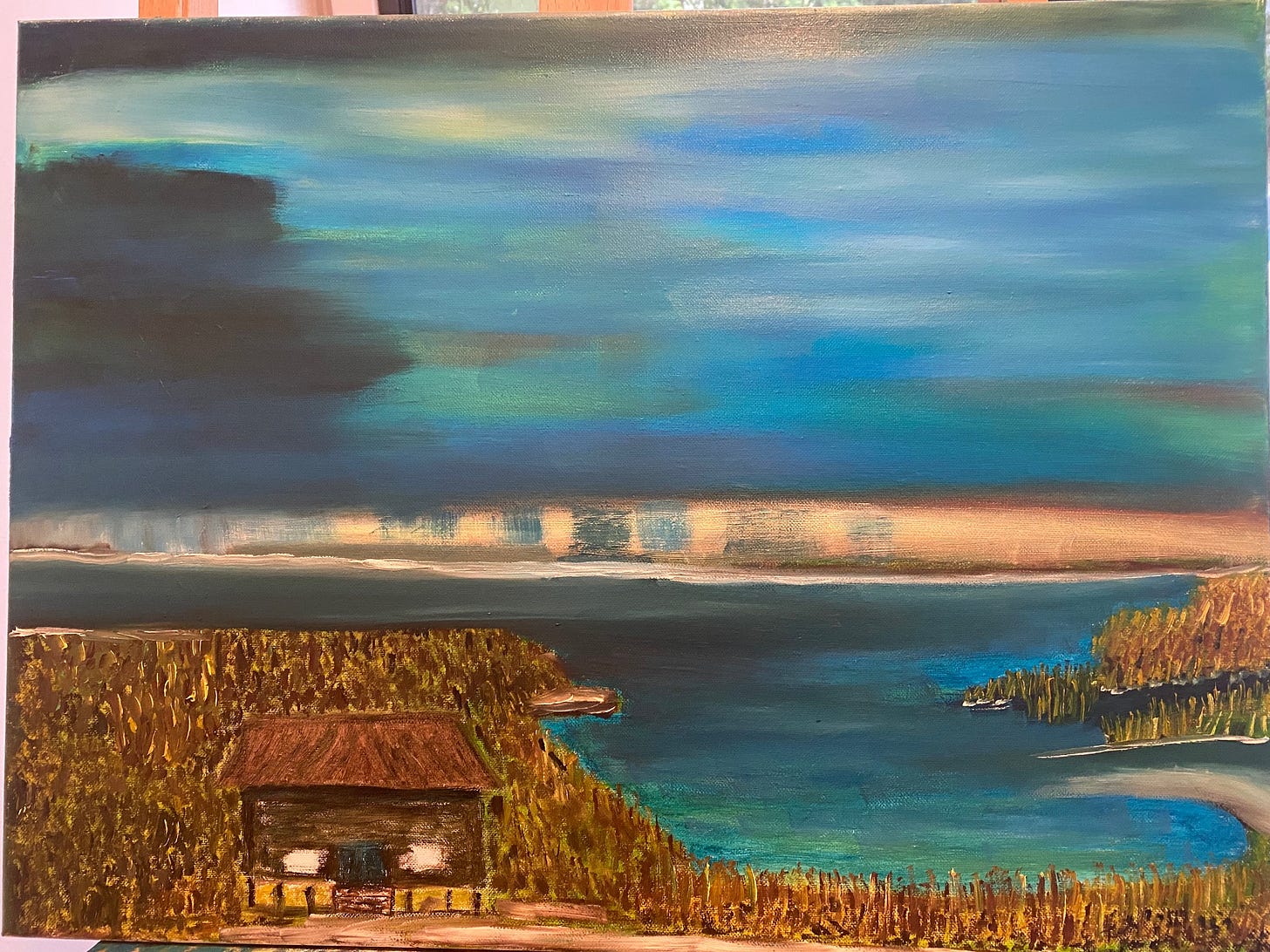The beauty of the land meeting the sea at Hilton Head Island has been seen by many over the Centuries. I saw a storm rolling in off the Calibogue sound last week and painted it (oil on stretched canvas). A similar scene was undoubtedly seen in 1950 before there was a bridge to the island, as well as by Enslavers and Enslaved people alike 200 years ago. And many Centuries before.
The scene of moving rice at dawn (acrylic on paper) could be from 1850 or 1950 as much about cultivating rice remained the same in the midst of many changes.
I learned the use of color emulating low country artists who represent the vibrancy of Gullah culture with the brightness of their art (acryllic on stretched canvas) and I love the life that comes from the color.
A short bike ride from where we have a house on Hilton Head, sits the ruins of the Stoney-Baynard plantation that is notable for the tabby foundations that remain today (tabby is a cement made from crushed shells, earth and water). Below are some pictures I took there recently, first of the home built in 1790 that served as the Union Army’s headquarters after the Island was taken in November, 1861 early in the Civil War.
This photo shows the tabby foundation ruins of a cabin in which enslaved persons lived, about 50 yards from the house.
My wife calls Hilton Head “my happy place” and that is true. I love walking just as the sun rises, and seeing its orange light climb the horizon over the ocean. Learning the fullness of the history has not lessened my love for Hilton Head, nor its ability to settle my soul, but it has instead made me feel more human and to realize that those who came before me here and who will come after I am long gone and forgotten share some common bonds of humanity with me that is most basically expressed in the ability to love and to admire beauty.
Those are both good things to do every day.
The beach scene below is an early attempt at acrylic on canvas that I recently modified by painting Indigo in oil over the beach scene. The point is to note that the same view had by vacationers on the beach was seen by enslaved people working the same Earth as chattel. But love and beauty won out even in pain.
In the Sea Pines Nature Preserve there is an Archaic (Ancient) Indian Shell Ring that was believed to be the remains of a ring of oyster shells that mark a ceremonial celebration ground of people who were likely nomadic. However, new archeological research has found evidence of a more permanent structure inside the ring from 3000-4000 years ago. That would make Hilton Head Island the site of one of the first human villages in what we today call North America.
I like that they might have enjoyed an oyster roast as a storm rolled in across the Sound, whatever they may have called it.








